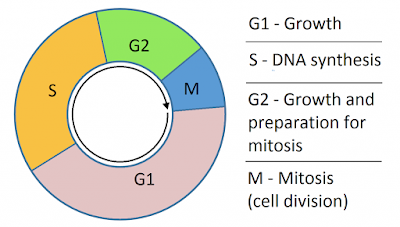-
Genetics word first used by => W. Watson
(in 1905).
-
Transmission of character from
one generation to next generation is called
Heredity.
-
The process of transfer of hereditary character from generation to
generation called as Genetics.
-
The characteristics which transmit from generation to generation is
transported by Gene.
Gene:
-
Gene word first coined by =>
W. Johannsen (in 1909).
-
It is a unit of hereditary material located on
chromosome.
-
Gene itself or with other gene determine character of
organism.
-
Gene exist in number of alternative forms termed as
alleles.
-
Gene occasionally undergo for radial changes called as
Mutation.
-
The modern concept of perception about the gene was given by
=> Benjer (in 1956).
-
Functional unit of gene =>
Cistron
-
Unit of gene responsible for mutation =>
Muton
-
Unit of gene take a part in recombination =>
Recon
- In Human 35000 gene are present.
|
-
Gregor Johann Mendel said that hereditary character is transfer by
gene.
-
Hence Gregor Johann Mendel is known as
Father of Genetics.
Mendel's Experiment:
-
Mendel chooses 7 pair of pea plant species for his experiment.
Characters
|
Dominant characters
|
Recessive characters
|
|
Shape of the seed.
|
Spherical smooth seed.
|
Wrinkled seed.
|
|
Color of the cotyledon.
|
Yellow |
Green |
|
Color of flower.
|
Red |
White |
|
Shape of the fruit.
|
Smooth |
Shrinked
|
|
Color of the fruit.
|
Green |
Yellow |
|
Position of the flower.
|
Tall |
Farthest
|
|
Length or Height of the plant.
|
Tall |
Dwarf |
Mono-hybrid Cross:
Mendel made cross between 2 pure plant having contracting character for
single trait called Mono-hybrid cross (i.e. Tall & Dwarf plant for
height)
Phenotype ratio => 3 : 1
Genotype ratio => 1 : 2 : 1
Di-hybrid Cross:
Mendel made cross between 2 pure plant having in 2 pair of
contracting character i.e. color & shape of seed called Di-hybrid
cross. (i.e. Plant having round seed with yellow color & wrinkle
seed with green color.)
Phenotype ratio => 9 : 3 : 3 : 1
Genotype ratio => 1 : 2 : 1 : 2 : 4 : 2 : 1 : 2 : 1
Mendel's Law of Heredity:
-
On the basis of mono-hybrid and Di-hybrid cross Mendel proposed law
of heredity.
1.
Mendel's First Law: (Law of dominance)
-
According to it when two dissimilar unit factors are present in an
individual only one is able to express.
-
One that express itself is dominant character while which
fail to express is recessive character.
-
In the first generation only the
dominant character is visible, while the
recessive character is hidden and it appears in the next
generation.
2.
Mendel's Second Law: (Law of segregation)
-
According to this law during the gametes formation both the
character which governed by gene is segregated and out of these
factors only one factor is reached in the gamete.
-
Both factors never come at a time in the gamete.
-
This law is also called the
Law of purity of Gametes.
3.
Mendel's Third Law: (Law of Independent Assortment)
-
According to this law various pairs of the factors which
exist in organism are independent to each other.
-
Thus organism of new appearance may born.
Terms Related to Genetics:
- Phenotype:
-
The characteristics of the organism which are directly &
visibly appreciable is called Phenotype.











